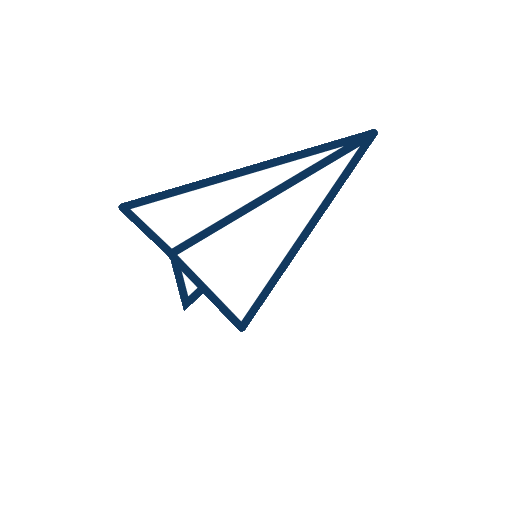Get in touch
By clicking on the button, you agree to the privacy policy
HOW TO
How to Build Web Dashboards for IoT Applications?
Estimated reading time: 9 minutes
November 26, 2020
November 26, 2020
HOW TO
How to Build Web Dashboards for IoT Applications?
Estimated reading time: 9 minutes
November 26, 2020
November 26, 2020
HOW TO
How to Build Web Dashboards for IoT Applications?
Estimated reading time: 9 minutes
November 26, 2020
November 26, 2020
CEO at Aspirity
Written by
Internet of things (IoT) is a network of various interconnected devices that track and generate large amounts of data. By adding sensors to all kinds of devices, you create digital intelligence and enable real-time data communication.
Dashboards for IoT applications have become a crucial part of the user interface. They are especially important for IoT applications because their primary goal is data collection. To track and structure immense amounts of data, you need to integrate dashboards. They allow you to visualize information, discover trends, and notice patterns.
Even though the importance of IoT dashboards has been widely recognized and accepted, the question about how and why to collect and analyze insights is still bugging many.
What are the main components and advantages of IoT dashboards, and how to build them? Keep reading as we unveil the answers to these questions.
Dashboards for IoT applications have become a crucial part of the user interface. They are especially important for IoT applications because their primary goal is data collection. To track and structure immense amounts of data, you need to integrate dashboards. They allow you to visualize information, discover trends, and notice patterns.
Even though the importance of IoT dashboards has been widely recognized and accepted, the question about how and why to collect and analyze insights is still bugging many.
What are the main components and advantages of IoT dashboards, and how to build them? Keep reading as we unveil the answers to these questions.
The Three Advantages of IoT Dashboards
Monitoring and control of physical assets
When we think about the Internet, we don't imagine physical things but consider only the digital paradigm. IoT encompasses the physical world as well by including them into the digital one. We use IoT dashboards to represent data in the form of charts, graphs, maps, and widgets to bring the data from the physical realm to our computers. In other words, it is a way to translate data into "human language" and use this information to achieve a certain goal.
Accessible for both businesses and individuals
IoT analytics becomes available for everyone — executives, managers, employees, and even customers. Due to their initial purpose and design, IoT dashboards are supported by every smart device and can be beneficial for both individuals and corporations. Businesses integrate dashboards to improve operating efficiency and data security, whereas individuals need them to monitor and enhance their own productivity, for example, to track their fitness performance.
Cloud-based
Since IoT is based in the cloud, it can be accessed from anywhere as long as you have an Internet connection. For example, if you create web dashboards for IoT devices, they can be reached via a URL. Thanks to global accessibility and availability of cloud vendors like AWS and Google Cloud, any company can afford to migrate their data to the cloud and actually save money.
6 Prominent IoT Dashboard Examples
The Ubidots use case: GPS tracking
GPS tracking is widely used for the International Space Station, where monitoring machine conditions is vital. System operators receive real-time data about the machine's performance, condition, pressure, etc. which helps them know when and how to act. Digital panic buttons have been introduced to IoT dashboards to alert the operator about the potential threat immediately.
Considering that the cost of repair of a machine breakdown is four to fifteen times higher than the cost of maintenance, integrating IoT dashboards saves the International Space Station a lot of money.
Considering that the cost of repair of a machine breakdown is four to fifteen times higher than the cost of maintenance, integrating IoT dashboards saves the International Space Station a lot of money.

The iTraq Butterfly use case: tracking services
IoT dashboard apps can be implemented for both business and personal use. GPS tracking goes beyond simple location tracking: it involves collecting data about the temperature, light, and motion sensors. Using all this data, customers can trace packages throughout the shipping lifecycle based on real-time information and make sure their parcel gets to the destination point safe and sound.
iTraq Butterfly is a low-cost tracking solution that allows customers to trace their packages and locate them at any point in time. Another way of using iTraq is by giving it to your children or parents or attaching to your pet's collar so that you can always know their whereabouts. We've created an online platform where customers can log in and check their package's status or the location of the GPS tracker beholder. The integrated map makes tracking much easier and faster.
iTraq Butterfly is a low-cost tracking solution that allows customers to trace their packages and locate them at any point in time. Another way of using iTraq is by giving it to your children or parents or attaching to your pet's collar so that you can always know their whereabouts. We've created an online platform where customers can log in and check their package's status or the location of the GPS tracker beholder. The integrated map makes tracking much easier and faster.

The Birst use case: consumer product usage
The digital world has already revolutionized marketing many times, and IoT dashboards have a solid chance of changing it again. IoT solutions are able to analyze how customers use your company's internet-connected products. After analyzing their internal data as well as searching their brand awareness on social media, Birst has determined a correlation between the two. Birst came to the conclusion that consumers who brew more coffee are also more inclined to discuss the related brand on social media.

The Pace DPR use case: manufacturing
Since the majority of manufacturing data is recorded manually, there is a high risk of human errors. Manual data input can also lead to manipulation and fraud. Tracking human errors and potential security threats is highly difficult, especially considering the amount of information. IoT analytics dashboards serve as a tool to monitor the manufacturing performance and increase productivity. By visualizing the important metrics and automating the process of data entry, users can achieve better results and avoid unnecessary complications.

The AWS IoT dashboard use case: water consumption
There are many regions in the world where water consumption is a legitimate problem. Countries with limited water sources are at risk of having a drought and running out of drinking water. Through the virtue of graphs, charts, and maps, people have access to information about possible leaks as well as overall trends in water usage. Historical data allows consumers to compare their water consumption with a previous period and make smarter decisions.

The Bevywise use case: monitoring and alerting
Building IoT dashboards for smart homes is a popular trend. You can control the safety of your house from a large distance as well as alert the police or fire department. The sensors installed in smart homes monitor temperature, smoke, CO2 levels, and humidity. This data can be visualized on your smartphone or tablet so that you could see trends and comparisons at any time.
Key IoT Dashboard Components
Whether you build an IoT system by yourself from scratch or acquire an off-the-shelf solution, first, you need to familiarize yourself with the main components the best IoT dashboard must have.
Data collection
Data collection is a fundamental goal of IoT devices; however, it varies from business to business and depends solely on your goals. Below are some of the main IoT dashboard components:
- Temperature,
- Humidity,
- Motion,
- GPS coordinates,
- Pressure,
- Air quality,
- Voltage/energy.
Real-time performance data
Real-time data is absolutely necessary for IoT solutions; however, a number of complications might occur that prevent data from being instantly uploaded. A delay might take place when the data is being transported from the IoT device to the dashboard, or there can be a delay in the data processing itself, or even in the way the dashboard is displayed for the end-user.
The trick is to transport data directly to the IoT dashboards by skipping the database or collecting data in batches. Real-time data processing should represent accurate information about the event when it occurs. This requires three things:
The trick is to transport data directly to the IoT dashboards by skipping the database or collecting data in batches. Real-time data processing should represent accurate information about the event when it occurs. This requires three things:
- Dynamic database,
- Stable connection,
- Qualified development skills and resources.
Data visualization
Once you start collecting data, you can immediately begin visualizing it. There are plenty of ways:
- Graphs,
- Gauges,
- Geographical maps,
- Charts.
If you are uncertain which one to go for, choose several to compare and test them out.
Alerts & warnings
You cannot spend your entire day staring at the internet of things dashboards. This is why alert notifications have become important. Build an IoT dashboard with built-in automatic warning capabilities that will send you messages via the option that suits you: an SMS, email, or push. The notifications should be custom-made — so choose the method, set the threshold, and customize the message's content. Finally, alerts could also be sent to another computer to trigger a certain function.
Have an amazing idea?

We will be happy to develop that idea into an MVP or a full fledge product!
GET IN TOUCH NOW!
Just fill in the form and we'll schedule a meeting
Insights on performance over a while
Presenting information without any historical data to compare it to is not very productive. A custom web IoT dashboard should allow users to choose particular periods and durations to compare various data. When you analyze patterns, build trends, and make data-driven decisions, the chances of making effective choices rise significantly. In such a way, any user can plan smartly and enhance their productivity.
What's important here is to plan and capture the data so you can access it later and process it flexibly. It becomes even more essential when your business grows and expands to new branches, departments, and locations.
What's important here is to plan and capture the data so you can access it later and process it flexibly. It becomes even more essential when your business grows and expands to new branches, departments, and locations.
Secure access control systems
Depending on who is going to access your data, certain access control systems should be developed. The best IoT dashboards have hierarchical systems that ensure smooth and safe role-based access to the information.
The safety of your customers' data should not be compromised, which is why a certain level of limitations should be put in place. For example, an administrator has access to data about every employee at their departments; however, an individual employee can only see their own data and not that of their colleagues. A breach of confidential information can lead to costly lawsuits and ruin the company's reputation.
The safety of your customers' data should not be compromised, which is why a certain level of limitations should be put in place. For example, an administrator has access to data about every employee at their departments; however, an individual employee can only see their own data and not that of their colleagues. A breach of confidential information can lead to costly lawsuits and ruin the company's reputation.
Mobile access
Mobile devices have become so popular that hardly any software would not launch a mobile version. This is why building an IoT dashboard for smartphones is a vital point. Users want to access information at any time and place, and a mobile application will allow them to do so. It also goes back to alerts: to stay tuned, you want to receive notifications on your phone, not your desk computer or laptop.
Building Web Dashboards for IoT Applications
Key IoT components come down to IoT device control and monitoring, data collection and processing, as well as data management and analysis. All of the above requires building a complex system.

Choose a network
IoT networks are built with an architecture that includes devices, gateways, and data systems.
Whichever connection type you need, at first, you will require a network to support them. Depending on your goals and scale, choose one of the following networks:
Whichever connection type you need, at first, you will require a network to support them. Depending on your goals and scale, choose one of the following networks:
- A nanonetwork is applied in military and biometric cases and works with microchips and small sensors;
- Near-Field Communication serves to connect devices that are near each other, for example, contactless payments;
- A personal area network (PAN) connects devices within one or two rooms;
- A local area network (LAN) is created for devices within one building;
- A corporate area network (CAN) serves to connect devices within one organization, like a hospital or school;
- A metropolitan area network (MAN) is built to create smart cities or areas of a city;
- A wide area network unites MANs and LANs.
Choose a protocol
The purpose of protocols is to connect devices to apps and to each other. Here are some protocols you can use:
- MQTT (Message Queuing Telemetry Transport) is perfect for small and not powerful devices. It sends information through three components: subscribers, publishers, and brokers;
- DDS (Data Distribution Services) are built for computing and support more complex systems;
- AMQP (Advanced Message Queuing Protocol) is suitable for sending messages from apps to middleware and vice versa.
Custom-made or off-the-shelf Dashboard for IoT
Custom IoT dashboard
Building an IoT dashboard from scratch involves a ton of resources and expertise; however, it allows you to build something that will perfectly fit your company. You will be able to add new features that fulfill your business needs and customize the dashboards in accordance with your requirements.
In the short-term, the development process will require a substantial sum of money as well as a skilled workforce. But in the long term, it will eventually save you money by making your operations more effective.
Off-the-shelf IoT platform
If you do not wish to build an IoT dashboard, you can purchase one. They are significantly cheaper and ready to be implemented. There is no need to wait for the entire duration of the development process to start using it.
You will depend on the third-party vendor and its policies. Moreover, off-the-shelf solutions are highly non-customizable, which will make it nearly impossible to add or remove a feature. Finally, it's not a one-payment procedure; you will be paying every month, and if your team or needs grow, you'll have to pay even more for scaling and extra features.
Conclusion
The Internet of Things is making our lives easier, both personally and professionally. You can secure your home, take care of your assets as well as monitor your consumption. Besides, you can increase productivity and enhance the customer experience at your company by building IoT dashboard.
Aspirity is a trusted partner in software development, as well as UI/UX design. Our extensive knowledge will help you define your needs and deliver the perfect product for your business. Contact Aspirity to discuss your pain points and learn more about IoT solutions.
Aspirity is a trusted partner in software development, as well as UI/UX design. Our extensive knowledge will help you define your needs and deliver the perfect product for your business. Contact Aspirity to discuss your pain points and learn more about IoT solutions.
This article was written in collaboration with Maria D. — UI/UX Designer at Aspirity
CEO AT ASPIRITY
For more than 2,5 years, I've been working as CEO at Aspirity. I help professionals launch digital products by providing dedicated development teams.
Written by
Want to know more?
Read our other articles
Considering building scalable React apps but still not sure if it's a good idea? Here's the list of the main benefits of using React for any sized project.
Is your web site providing the best front-end performance? Or are you not using any of the popular techniques to make it load faster?
Is insurance digital transformation and digitization relevant for your industry? Read on to see how to minimize the main challenges of business digitizing.
How to choose telecom expense management software? What are the benefits of a TEM system, and how to implement it most efficiently?
Eager to obtain a custom design for a real estate website? Check out the best practices and get blown away by the examples of innovative websites.
Why is ERP system user experience important? Investigation through challenges and best practices, as well as examples of great ERP implementation.

Building custom software or have an existing one?
Aspirity is an offshore web development agency. We specialize in management, admin, and dashboard software.
If you have a custom software project — contact us for a confidential consultation or just read more from our blog.
If the article seemed interesting to you, share it with your friends
Aspirity is an offshore web development agency. We specialize in management, admin, and dashboard software.
If you have a custom software project — contact us for a confidential consultation or just read more from our blog.
If the article seemed interesting to you, share it with your friends





